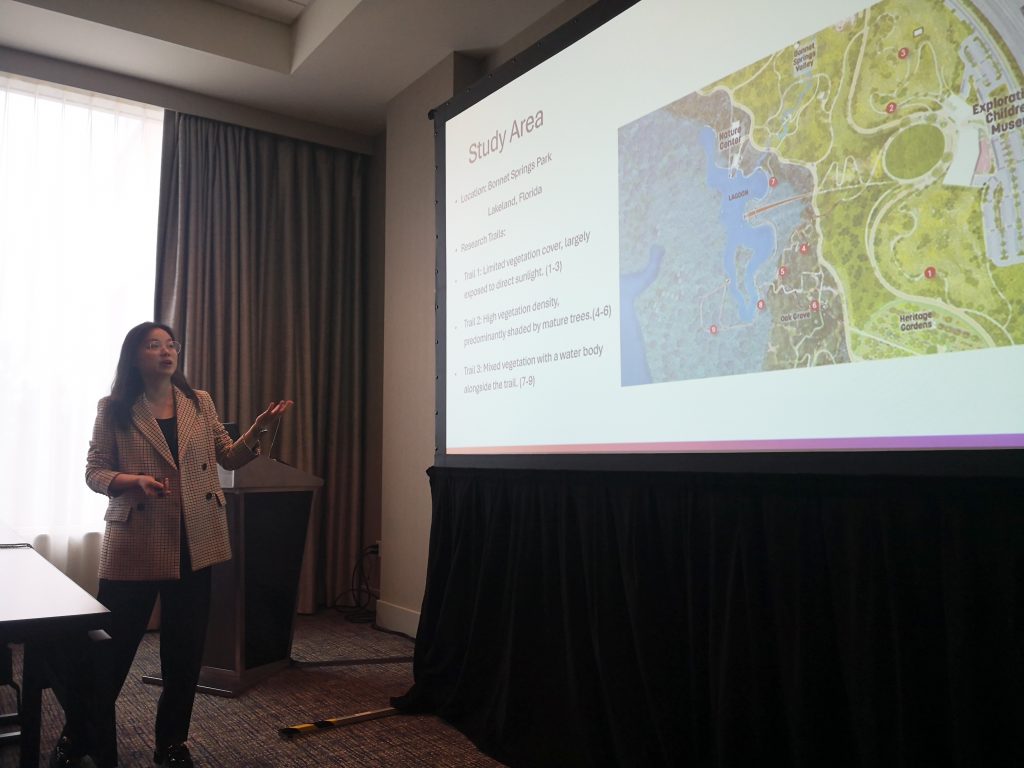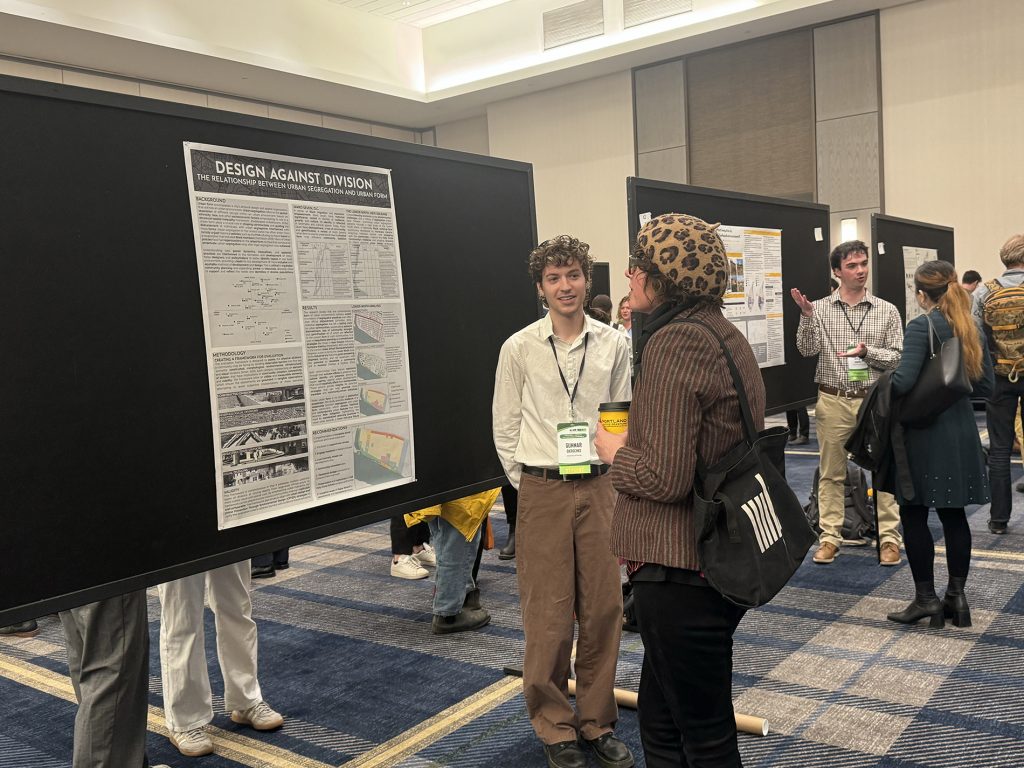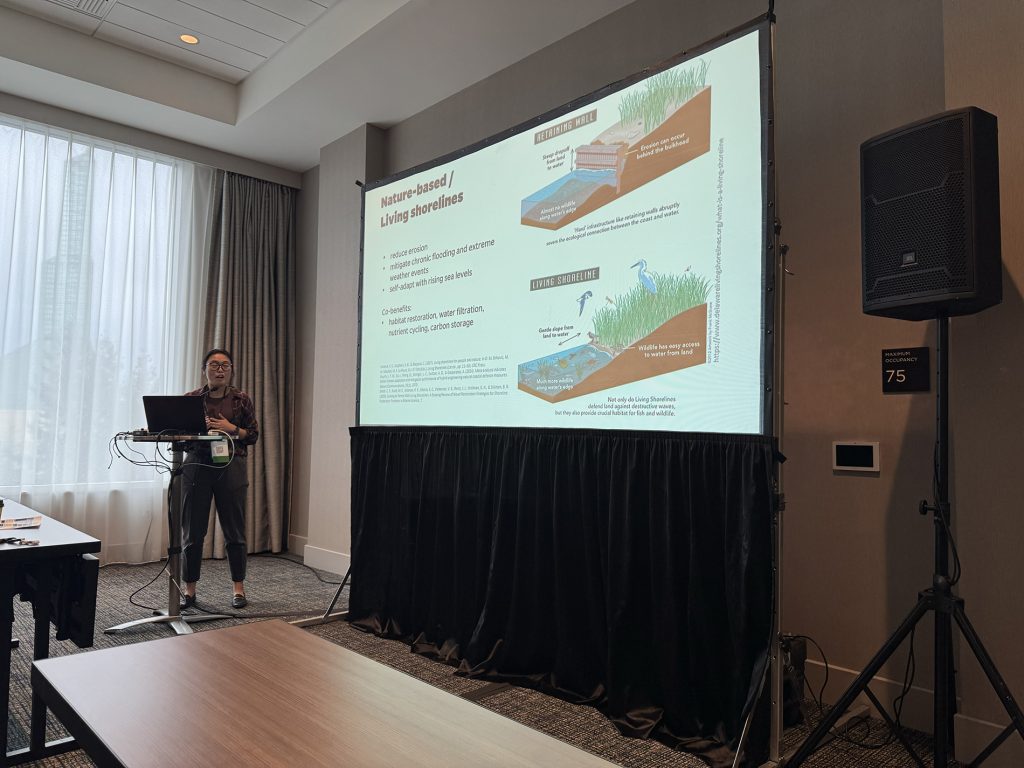
Students and faculty from the UF Department of Landscape Architecture traveled to Portland, Oregon recently to attend the Council of Educators in Landscape Architecture Conference, an event focused on sharing the latest research in the field. They were able to not only present their research, but also gained new networking opportunities and learned from peers in the educational community.
The faculty included Dr. Yi Luo, Dr. Jiayang Li, and Instructional Assistant Professor Aishwarya Shankar. Students who also participated in research presentations at the conference included Rui Hu, Gunnar Gierschke, and Haoting Hong.
Dr. Yi Luo presented her research on landscape performance evaluation, assessing built landscape projects to determine whether and to what extent the applied landscape strategies are achieving design goals and contributing to sustainability. Her research is crucial for promoting evidence-based landscape architecture, a direction in which the discipline is evolving.
Specifically, her presentation at CELA this year was about a collaborative project that measured the ecosystem services provided by residential properties associated with the Flip My Florida Yard TV show, helping to understand the impact of Florida-friendly landscaping.
For students, the chance to present their work to other professionals and educators was a great way to gain new skills and meet others in the field.
“I found the CELA conference to be an exceptional platform for sharing my research with fellow professionals and gaining valuable visibility within the academic and professional landscape architecture community,” said Ph.D. student Rui Hu, who will be graduating this spring.
“Presenting at CELA not only allowed me to receive constructive feedback but also sparked engaging discussions that deepened the impact of my work,” said Hu.

Ph.D. student Rui Hu presents her research project “Investigation into Outdoor Thermal Comfort for Older Adults”
CELA’s conference is an extension of the committee’s larger commitment to advancing landscape architecture research and education. Through their efforts, they hope to ensure the continuous evolution and impact of the discipline.
“This is one of the most important conferences for those aspiring to an academic career in landscape architecture,” said Hu. “Listening to insights from Ph.D. students and faculty from other institutions helped broaden my academic perspective, sparked new ideas, and contributed to the evolution of my own research interests. It also strengthened my passion for topics such as landscapes for health, landscape performance evaluation, and outdoor thermal comfort, while encouraging me to explore new directions in the field.”
Another student attendee was Gunner Gierschke, a senior in the landscape architecture program, who attended for the first time and presented his project “Design Against Division: The Relationship Between Urban Segregation and Urban Form”.

For faculty, the ability to share their published studies with peers, establish research networks, and stay up-to-date with the field’s current trends made this conference well worth the trip.
Dr. Jiayang Li presented her research, “Understanding community perception and stewardship of coastal nature-based solutions for climate resilience: A case study in Cedar Key, Florida”.
The research explores how nature-based solutions (NBS) are a promising alternative to traditional mitigation measures. In coastal communities like Cedar Key, Florida, climate change is exacerbating socio-ecological challenges. Utilizing NBS, which are actions to protect, sustainably manage, and restore natural or modified ecosystems, could result in not only enhanced flood resistance, but also provide co-benefits for human well-being and biodiversity.

Dr. Li presents her research at CELA 2025
Dr. Li’s research focused on Cedar Key, due to its small size and the fact that it’s in one of the poorest counties in Florida while simultaneously being faced with significant threats from shoreline erosion, intense storms, and increasing coastal flooding.
The research team conducted an intercept survey within the community from December 2022 to March 2023, and used this data to investigate how various stakeholder groups perceive different coastal infrastructure options on the green-gray spectrum and how they may involve themselves in stewarding behaviors of contributing to coastal infrastructure maintenance or funding. Preliminary results indicate significantly better perceptions of NBS over traditional gray measures like sea wall, including perceived protection function. This finding by the team contrasts with previous studies.
The study encourages interaction between landscape architects and the communities they’re serving – that engaging with stakeholder groups during the planning and design process is beneficial.
Find the full list of participants and their project titles below:
- Dr. Yi Luo: Assessing the Ecosystem Services of Florida-Friendly Landscaping – Using Flip My Florida Yards as Laboratories
- Dr. Jiayang Li: Understanding community perception and stewardship of coastal nature-based solutions for climate resilience: A case study in Cedar Key, Florida
- Prof. Aishwarya Shankar: Auto-Ethnography as a Reflective Approach to Landscape Architecture Co-Design in the Village of Khotale, India
- Rui Hu: Investigation into Outdoor Thermal Comfort for Older Adults
- Gunnar Gierschke: Design Against Division: The Relationship Between Urban Segregation and Urban Form

Assistant Professor Aishwarya Shankar presents her research on design principles